Disclosure: This article contains affiliate links. We may earn a commission from purchases at no extra cost to you, which helps our travel content.
There's something eerily familiar about North Dakota's badlands that reminds me of the rugged Scottish highlands I explored as a lad—minus the rain, of course. When my American colleague suggested Dickinson as a base for exploring western North Dakota, I initially scoffed. Military history in North Dakota? But I quickly discovered this unassuming region holds fascinating historical significance alongside breathtaking natural beauty that won't devastate your wallet. From Theodore Roosevelt National Park's otherworldly landscapes to surprisingly well-preserved frontier military outposts, Dickinson offers budget travelers an authentic American West experience without the tourist crowds or inflated prices of more popular destinations. As someone who's trekked through Eastern European battlefields and Scandinavian wilderness on a shoestring budget, I was genuinely impressed by what this overlooked corner of America has to offer the historically-minded adventure seeker.
Theodore Roosevelt National Park: A Budget Explorer's Paradise
The crown jewel of any Dickinson-based adventure has to be Theodore Roosevelt National Park, just a 30-minute drive west. At $30 per vehicle for a 7-day pass, it's one of America's more affordable national parks and offers astounding value. I spent three full days exploring its 70,000+ acres, and I could have easily stayed longer.
The park is divided into three units, with the South Unit being the most accessible from Dickinson. The 36-mile Scenic Loop Drive provides an excellent overview, but to truly appreciate the park's rugged beauty, you'll need to leave your vehicle behind. The Coal Vein Trail (0.8 miles) offers a fascinating glimpse into the area's geological history, while the more challenging Petrified Forest Loop (10.3 miles) rewards hikers with ancient fossilized trees that are over 60 million years old.
What surprised me most was the military history hidden within this natural wonder. The Maltese Cross Cabin, where Roosevelt once lived, showcases frontier military architecture, while the remnants of old U.S. Army routes through the badlands speak to the region's strategic importance during westward expansion. As someone who's explored countless European battlefields, I found these subtle historical layers particularly fascinating.
For wildlife enthusiasts, the park offers exceptional opportunities to spot bison, wild horses, prairie dogs, and elk. I recommend bringing a quality spotting scope for distant wildlife viewing without disturbing the animals. Dawn and dusk provide optimal viewing conditions, especially along the Wildlife Viewing Loop in the South Unit.

💡 Pro Tips
- Visit the South Unit early morning or late afternoon for best wildlife viewing and photography light
- Pack plenty of water and sun protection - the exposed terrain offers little shade
- Download offline maps as cell service is spotty throughout the park
Frontier Military History: Fort Abraham Lincoln State Park
Just an hour's drive east of Dickinson lies Fort Abraham Lincoln State Park, a site that immediately captured my interest as a military history enthusiast. At just $7 per vehicle, it's an absolute bargain compared to similar historical sites I've visited across Europe.
The fort served as Lt. Col. George Armstrong Custer's last headquarters before the infamous Battle of Little Bighorn in 1876. Five reconstructed military buildings, including Custer's house, offer a remarkably detailed glimpse into frontier military life. The meticulous historical accuracy of the interior design particularly impressed me—my interior design background made me appreciate the attention to period-appropriate furnishings and architectural details.
What many visitors miss is the On-A-Slant Mandan Indian Village located within the same park. Six reconstructed earth lodges represent the once-thriving Native American settlement that predated the military fort by centuries. The juxtaposition of these two historical sites creates a more complete narrative about the complex history of the region.
I spent an entire day exploring the grounds, joining the guided tours (an additional $8 but well worth it), and hiking the park's network of trails that connect historical sites. For military history buffs on a budget, this park delivers exceptional value. I'd recommend bringing a detailed historical guidebook to fully appreciate the significance of what you're seeing beyond the provided information panels.
The fort's position on the bluffs above the Missouri River also provides spectacular landscape photography opportunities, particularly at sunset when the golden light bathes the reconstructed buildings.
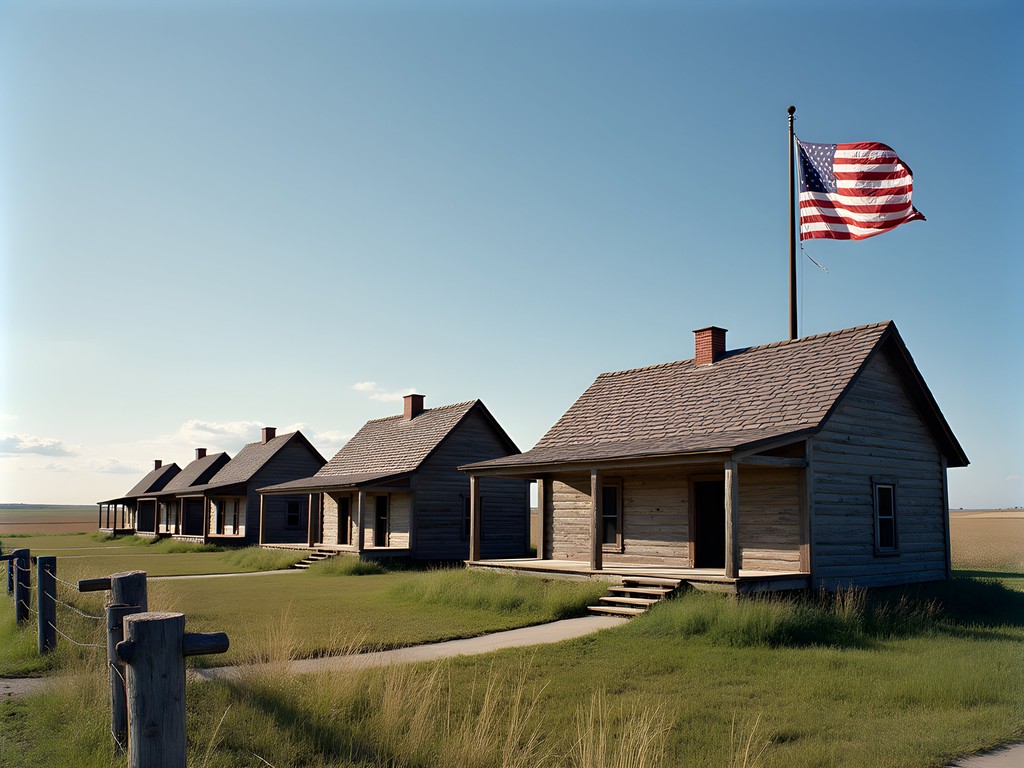
💡 Pro Tips
- Join the guided tours for access to building interiors and expert commentary
- Visit on weekdays to avoid crowds and have more personal interaction with interpreters
- Bring binoculars to spot wildlife along the river while exploring the military grounds
Geological Wonders: The Badlands Hiking Circuit
While most visitors to western North Dakota stick to the main attractions, I've compiled what I call the 'Badlands Hiking Circuit'—a series of interconnected day hikes that showcase the region's most spectacular geological formations without breaking the bank.
My circuit begins at Makoshika State Park, technically just over the Montana border but easily accessible from Dickinson (about 1.5 hours drive). The $8 non-resident entrance fee grants access to some of the most otherworldly badlands formations I've seen outside of Eastern Europe's karst regions. The Diane Gabriel Trail (1.5 miles) and Cap Rock Nature Trail (1 mile) provide excellent introductions to the unique geology.
Next, head to the Painted Canyon Visitor Center, just off I-94 near Medora. This free roadside stop offers spectacular panoramic views and access to the Painted Canyon Nature Trail (1 mile), which descends into the badlands for a more immersive experience. The geological stratification visible in the canyon walls tells a 65-million-year story of environmental change.
For more adventurous hikers, the Maah Daah Hey Trail represents the ultimate badlands challenge. This 144-mile trail system connects the three units of Theodore Roosevelt National Park, but can be tackled in manageable day-hike sections. I particularly recommend the 4.4-mile Buffalo Gap segment, which offers spectacular views with moderate difficulty.
Proper footwear is essential for these hikes—I relied heavily on my hiking boots to navigate the often unstable terrain. The combination of clay, silt, and sand that forms the badlands can become treacherously slippery after rain, so check weather forecasts carefully before setting out.
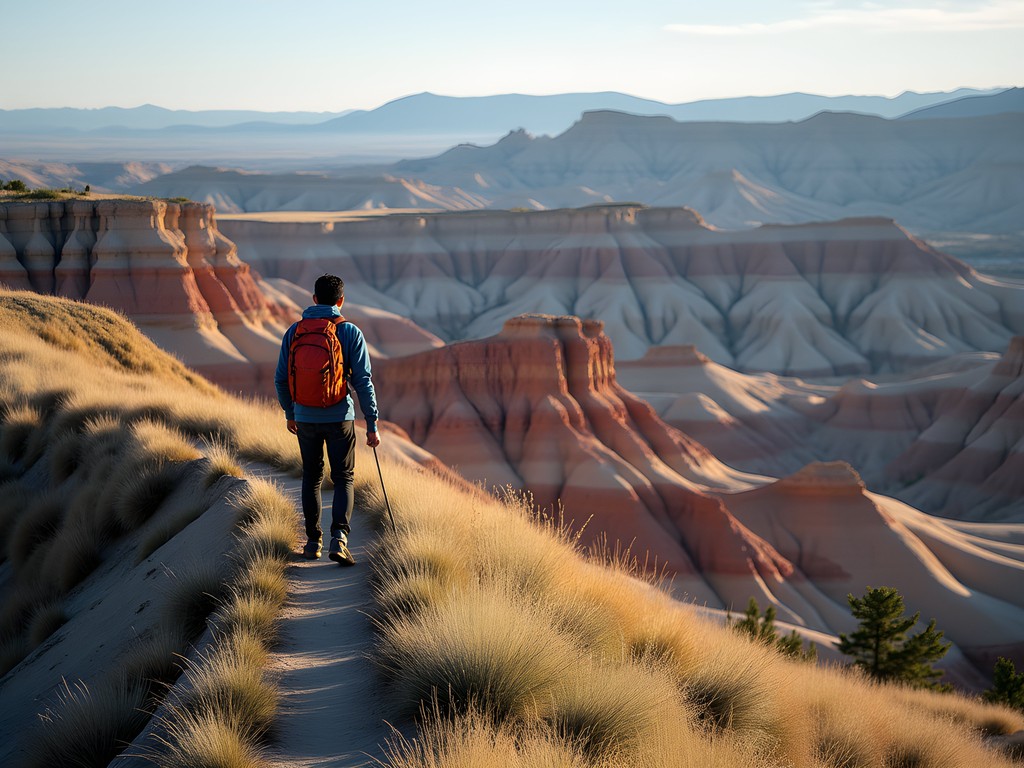
💡 Pro Tips
- Start hikes early to avoid afternoon heat and thunderstorms
- Bring trekking poles for stability on the crumbling badlands terrain
- Pack microspikes for your boots if hiking after rainfall - the clay becomes extremely slippery
Hidden Archaeological Sites Around Dickinson
My background in archaeology always leads me to seek out lesser-known historical sites, and the Dickinson area delivers several fascinating options that most tourists completely overlook.
The Knife River Indian Villages National Historic Site (free admission) sits just an hour northeast of Dickinson and preserves the archaeological remains of Northern Plains Indian earth lodge villages. What makes this site particularly interesting is the visible depressions in the earth where lodges once stood—these subtle features remind me of similar archaeological landscapes I've documented in Scandinavia. The on-site museum contains an impressive collection of artifacts, and reconstructed earth lodges provide insight into indigenous engineering techniques.
For those interested in paleontological history, the Dakota Dinosaur Museum in Dickinson itself ($8 admission) houses an impressive collection of fossils excavated from the surrounding badlands. While small by international standards, the museum's focused collection offers excellent value and context for the region's prehistoric past.
Perhaps my favorite discovery was the Writing Rock State Historic Site, about two hours north of Dickinson. This free site features two boulders with mysterious petroglyphs believed to have been carved by indigenous peoples centuries ago. The isolated location means you'll likely have the site entirely to yourself—a stark contrast to similar petroglyph sites I've visited in Europe that are overrun with tourists.
Documenting these sites properly requires good equipment. My travel camera with its compact size and excellent low-light performance proved perfect for capturing detailed images of petroglyphs and artifacts in varying lighting conditions. I'd recommend bringing a small tripod as well, particularly for the indoor museum exhibits where flash photography is prohibited.
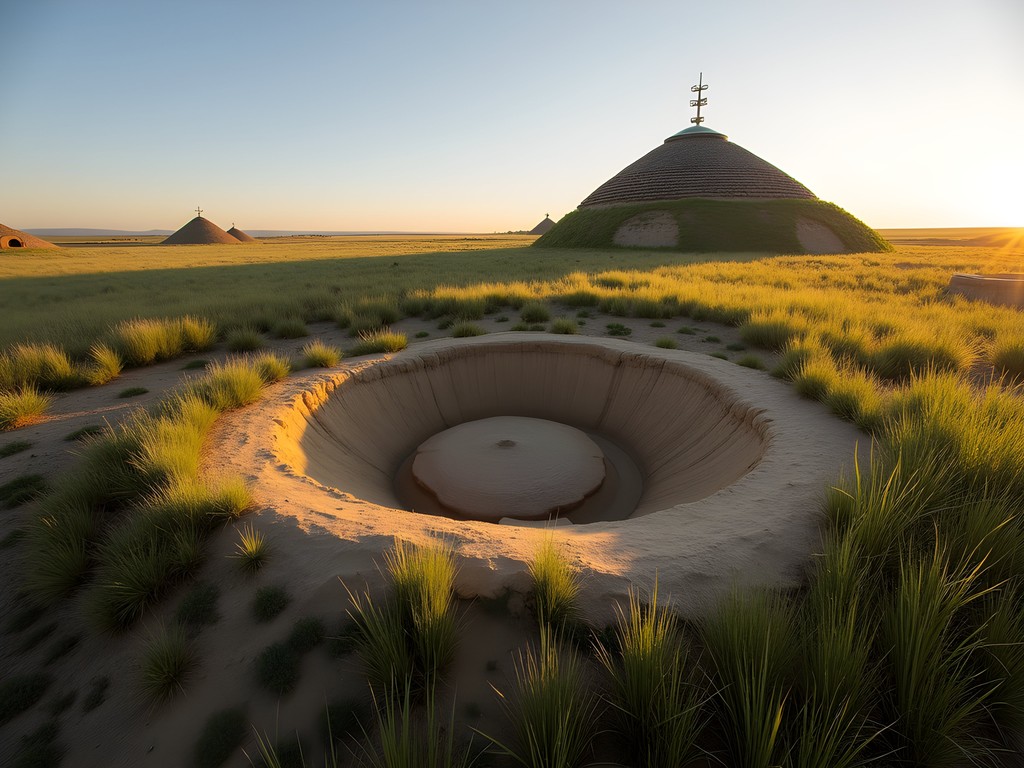
💡 Pro Tips
- Visit the Knife River site early in the day when the angle of sunlight makes the lodge depressions more visible
- Bring a notebook to sketch petroglyphs - this helps you notice details you might miss in photographs
- Check with the Dickinson Museum Center for information about seasonal archaeological field programs open to visitors
Budget Accommodation & Local Eats
Keeping costs down while maintaining comfort is always a priority in my travels, and Dickinson offers several excellent options for the budget-conscious explorer.
I based myself at the Roughrider Hotel & Suites in Dickinson, which at $65-85 per night (depending on season) provides exceptional value with clean rooms, free breakfast, and—crucially for planning adventures—reliable WiFi. The hotel also offers weekly rates for extended stays, which I negotiated down to $59 per night for my week-long exploration.
For those seeking even more economical options, the Dickinson State University opens its dormitory rooms to summer travelers at around $40 per night when classes aren't in session. The accommodations are basic but perfectly comfortable, and the central location provides easy access to downtown amenities.
Camping represents the ultimate budget option, with Theodore Roosevelt National Park offering sites at $14 per night. The Cottonwood Campground in the South Unit provides flush toilets and drinking water—luxuries compared to some of the Eastern European sites I've camped at! For a free alternative, the Little Missouri National Grassland permits dispersed camping, though you'll need to be entirely self-sufficient.
For meals, I quickly discovered that Dickinson's local diners offer the best value. Country Kitchen became my regular breakfast spot, with hearty portions under $10 that fueled my day's explorations. For lunch, I often packed supplies from the local Cashwise Foods supermarket, supplemented with fresh produce from the Dickinson Farmers Market (open Saturday mornings in summer).
Dinner at the Brick Oven Bakery was my favorite splurge at around $15 for excellent wood-fired pizzas using local ingredients. For budget evenings, the Pit Stop serves massive burgers for under $10 that easily provided enough leftovers for the next day's lunch.
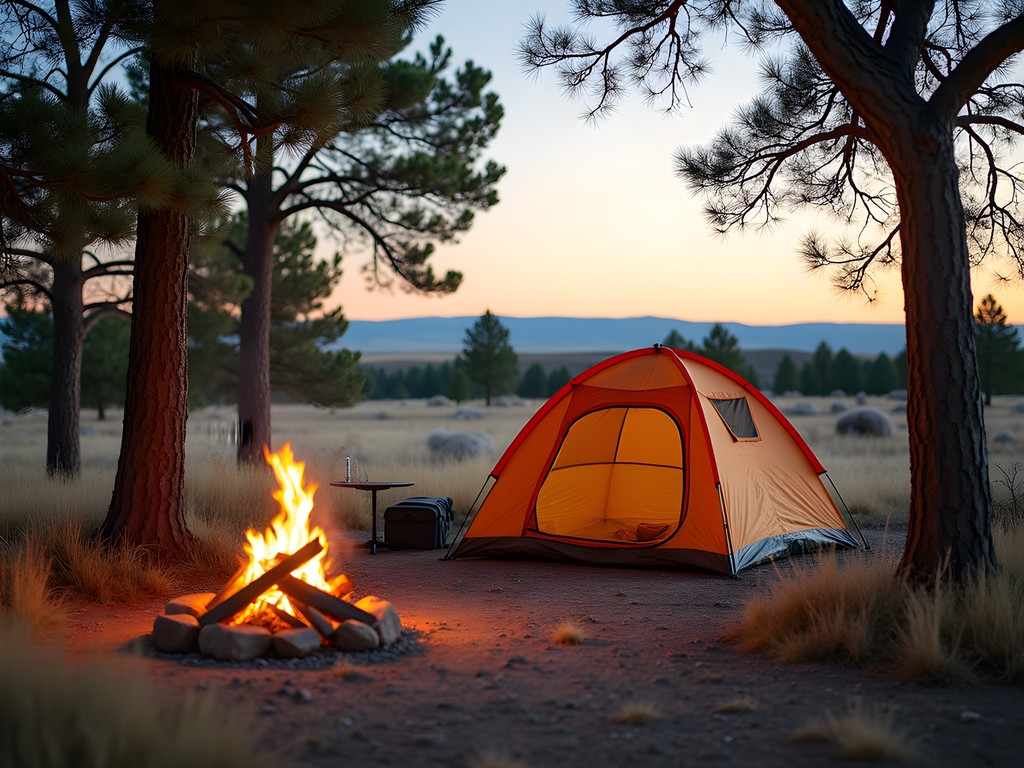
💡 Pro Tips
- Book accommodation well in advance if visiting during the summer high season
- Ask about weekly rates even if staying less than 7 days - many hotels will offer a discount
- Visit the Dickinson Convention & Visitors Bureau for free maps and occasional discount coupons for local attractions
Final Thoughts
Dickinson, North Dakota surprised me in ways I never expected. As someone who's trekked through Eastern European battlefields and Scandinavian archaeological sites, I found the region's combination of military history, geological wonders, and archaeological significance genuinely world-class—all available at a fraction of the cost of more popular American destinations. The raw, unfiltered landscape speaks to something primal, much like the Scottish highlands of my youth, yet with its own distinct character shaped by millions of years of geological forces and centuries of human history. Whether you're scaling a badlands butte at sunrise, tracing Custer's final days at Fort Abraham Lincoln, or deciphering ancient petroglyphs at Writing Rock, western North Dakota offers budget adventurers an authentic experience increasingly rare in our over-touristed world. Pack your boots, bring your sense of adventure, and prepare to see America through a different lens—one shaped by time, conflict, and the enduring human spirit.
✨ Key Takeaways
- Dickinson provides an excellent budget-friendly base for exploring western North Dakota's historical and natural attractions
- Military history enthusiasts will find surprising depth in the region's frontier forts and indigenous sites
- The geological formations of the badlands offer world-class hiking opportunities without the crowds of more famous parks
- Summer offers the most reliable weather, though spring and fall provide lower prices and fewer visitors
📋 Practical Information
Best Time to Visit
June through September
Budget Estimate
$50-100 per day including accommodation, food and activities
Recommended Duration
5-7 days
Difficulty Level
Moderate


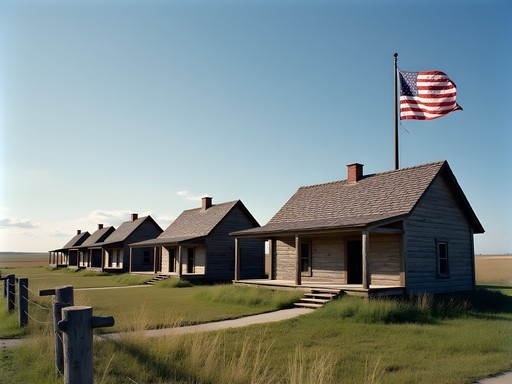
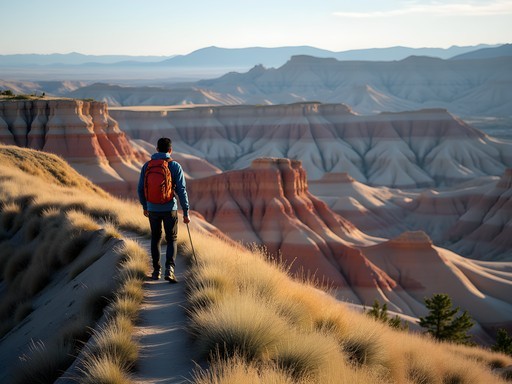




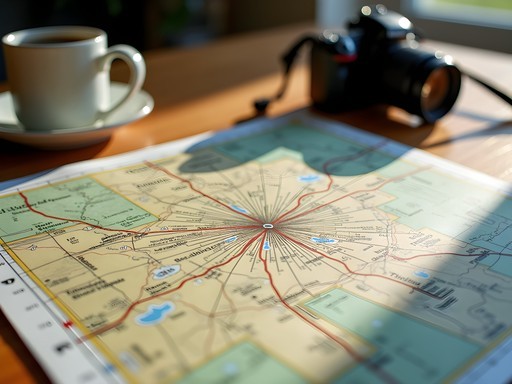

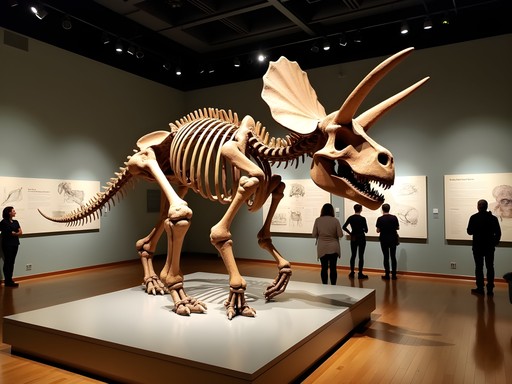
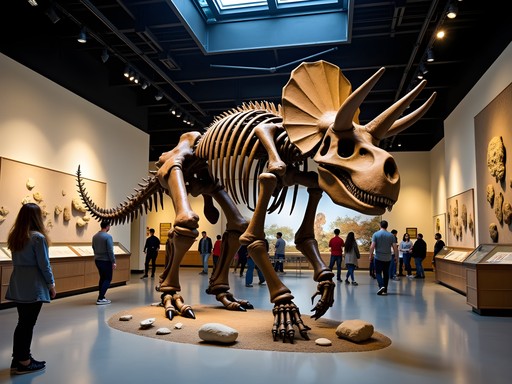




Comments
starking
Any recommendations on where to stay if we want to be central to both Theodore Roosevelt NP and the archaeological sites? Prefer something with good WiFi as I'll need to work remotely a couple days.
Jose McDonald
Dickinson itself is your best bet for reliable WiFi. We stayed downtown and it was about 35 mins to the South Unit entrance. If you're feeling adventurous, there are some cool glamping options near Medora with surprisingly good connectivity!
wanderlustseeker
Great guide! We visited Dickinson last October and the fall colors against the badlands were stunning. Fort Abraham Lincoln was much more interesting than I expected - the reconstructed earth lodges gave such insight into the indigenous history. One tip: the wind can be brutal in the open areas, so bring layers even if the forecast looks warm.
Jose McDonald
Donald! Dude! Your post brought back memories of my epic Badlands trip last summer! That sunset hike along the Ridgeline Trail was INSANE for photography. I caught some bison silhouettes that are still my best wildlife shots to date. For anyone heading there, definitely pack a good telephoto lens - I used my zoom lens and it was perfect for wildlife without disturbing them. The archaeological sites near Dickinson were a hidden gem - hardly any crowds compared to the main park areas. Did you check out Makoshika State Park just across the Montana border? Similar vibes but even fewer people!
freemate5239
Which hiking trail in the Badlands circuit would you recommend for a family with kids (ages 8-12)?
wanderlustseeker
Not the author but we took our kids on the Coal Vein Trail and they loved it! It's short (less than a mile) but has informational signs about the geology that kept them engaged. The Buck Hill Trail is also good for amazing views without too much difficulty.
freemate5239
Thanks so much! Those sound perfect.
bluebackpacker
Been to 42 states and ND badlands still rank in my top 5 landscapes. Underrated gem!
Megan Martin
Donald, your comparison to the Scottish highlands caught my attention immediately! I visited Theodore Roosevelt NP last fall on a business trip extension and was equally impressed. The Petrified Forest Loop was particularly stunning with the changing colors. Did you have time to visit the Painted Canyon Visitor Center? The sunrise views there were worth the early alarm. Your archaeological sites section gave me several spots to add for my return visit.
starking
Megan, how many days would you recommend for Theodore Roosevelt NP? Planning a trip in September.
Megan Martin
I'd suggest at least 2 full days for Theodore Roosevelt NP - one day for the South Unit and one for the North Unit if possible. September is perfect timing!
escapefan
Wow! Never thought ND would be on my bucket list but those badlands photos are incredible! Adding this to my summer plans!
sunnyexplorer
Planning a trip to Dickinson in October. Is that too late in the season? Any specific trails you'd recommend for someone with moderate hiking experience? Also curious about those archaeological sites you mentioned!
bluebackpacker
October is perfect - fewer crowds and the fall colors are amazing. Buck Hill trail is moderate and has incredible views.
Sophia Gomez
Donald, your comparison to the Scottish highlands is spot on! I was in Dickinson last September for a business trip and extended my stay just to explore Theodore Roosevelt NP. The Caprock Coulee Loop was challenging but those panoramic views were worth every step! For anyone planning a visit, I highly recommend staying until sunset at Peaceful Valley Ranch - the light hitting the buttes creates the most incredible photo opportunities. Also, don't miss the Prairie Dog Town near the park entrance - those little creatures are surprisingly entertaining! My hiking poles were absolute lifesavers on those rugged badlands trails.
sunnyexplorer
Thanks for the sunset tip! How many days would you recommend for exploring the park properly?
Sophia Gomez
I'd say minimum 2 full days - one for each unit of the park. If you can swing 3-4 days, even better!
nomadmaster
Those badlands look sick! Adding to my road trip plans.
Venture X
Premium card with 2X miles, $300 travel credit, Priority Pass